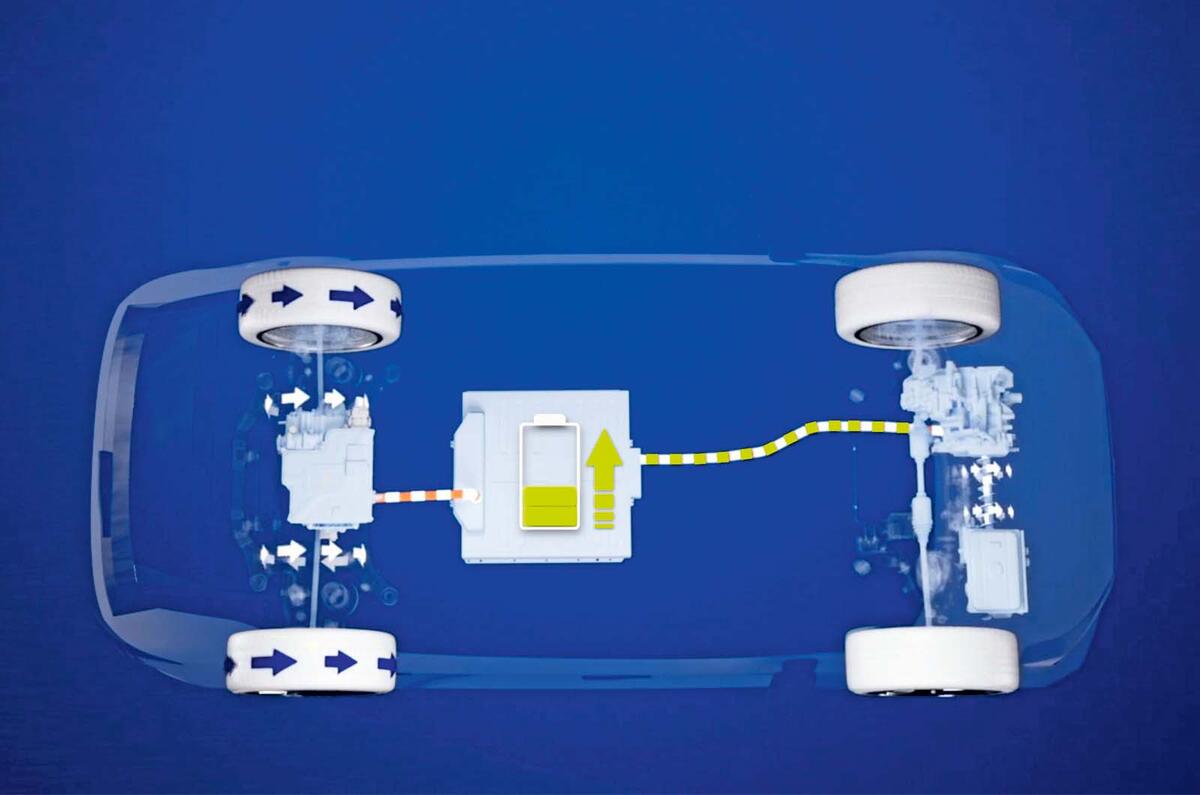Range-extenders have been in the mix of possible alternatives to pure-petrol and pure-diesel powertrains for nearly three decades, and with new eRE and eRE+ powertrain products from ZF Friedrichshafen arriving in 2026, we could start seeing more of them.
It’s a technology that appears to be enduring. Citroën produced versions of the Saxo, Xsara and Berlingo back in the 1990s and there have been plenty of working concepts from various manufacturers since. For instance, GM launched the Chevrolet Volt in 2016 and the Mazda MX-30 R-EV is on sale today.
ZF is one of the world’s largest automotive tier one suppliers and it’s investing big in range-extender technology. Its aim is to make it easier for manufacturers to slot the technology into production cars in a modular way rather than evolve it from scratch.
Such an approach is not unusual. Often, a new technology we see in a car is a product that has been developed by a tier one supplier and sold to the car manufacturer.
ZF developed a range-extender for London black cabs in 2018 and in November 2023 it began work on its latest products, the eRE (electric Range Extender) and eRE+, which gives the option of four-wheel drive. Work first started on the eRE at ZF’s technical centre in Shanghai, reflecting the increasing appetite for range-extenders in China.
What exactly is a range-extender? In its purest form, it’s simply an EV but with a much smaller battery and a generator to top the battery up when needed.
Unlike a full parallel hybrid, in which the engine and electric motor can drive the wheels in whichever configuration the manufacturer chooses, the combustion engine in a true range-extender doesn’t drive the wheels: the electric motor does, powered by the battery, which is charged by the generator.
The battery can usually also be charged via a socket like a plug-in hybrid. The technical name for a range-extender is a series hybrid, because the energy is passed in series, from generator to battery to motor.
The ZF eRE does that and a typical configuration is for a generator powered by a combustion engine, with a motor driving the rear wheels. The eRE+ develops that by adding a planetary gearset, a bi-directional clutch and a differential.
This enables the motor-generator to drive the front wheels, which, with the main motor driving the rear wheels as before, gives four-wheel drive. Alternatively, the motor-generator is able to work in generator mode, de-clutched from the axle, to charge the battery while the car travels in rear-drive.




Join the debate
Add your comment
I've just bought a new £37k BEV that fits five people and luggage. Not £70k. 37. Everyone said I was mad because I live in a city with no private parking. Last week I drove over 400 miles in one day. I charged once from 19% to 90% in half an hour, during which time I had a pee, stretched, and ate an M&S sandwich. The charge cost me about £45. There is no range issue. BEV's cover most needs in the UK. I don't need 800-miles range for the one time a year I might do that. And when I get back in my old ICE Audi that I've adored for 5 years, it smells bad, seems really noisy, and jolts through the gears like it's drunk. I'm not saying hybrids, etc., are bad; I'm simply saying the anti-BEV stuff is getting boring. And I'm a petrolhead!
No mention of the failed Range extenders, Vauxhall Ampera, BMW i3 both of which were dropped because poor sales. BEVs are cheaper than PHEVs and Range Extenders and the gap will widen as BEV's get more popular and tech improves.
PHEV's, having 2 engines capable of doing the same job, it's the most pointless tech ever. Range extenders, what's a serious advantage of using petrol to charge a big heavy battery then turn the wheels.
Yes some people think they need to drive 500 miles non stop without a toilet break for 10 hours once, but most don't and those that do buy a petrol or mild hybrid car for the next 10 years.
So nice to see Autocar use the right nomenclature (series hybrid) right at the end of the article - now if only they'd replace REx throughout the article with this, we might actually be getting somewhere.Series PHEVs (which is what a REx is) have been around for decades, as discussed. They exist because BEVs have a fundamental flaw - they don't work for the edge cases, which are why people buy cars.
That 600-mile round trip that a person does twice a year - when they make the massive decision to spent £65,000 on a car, they think about that. A lot.
The face of the matter is both current generation and next generation EV batteries do not resolve this range issue - and with the amount of funding ploughed into battery research, at this point one must question if it is possible to do so. (where's the article on that?)